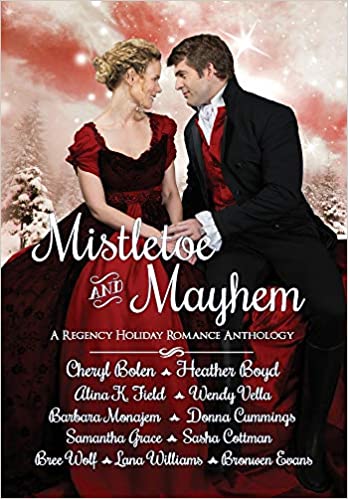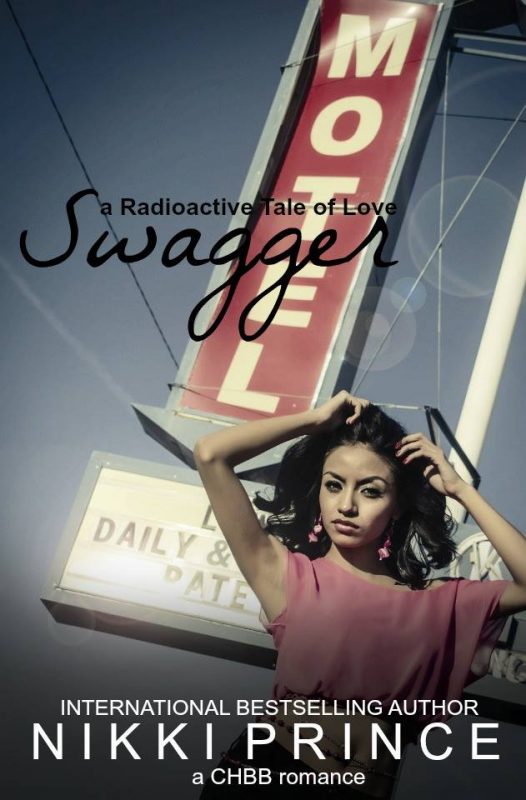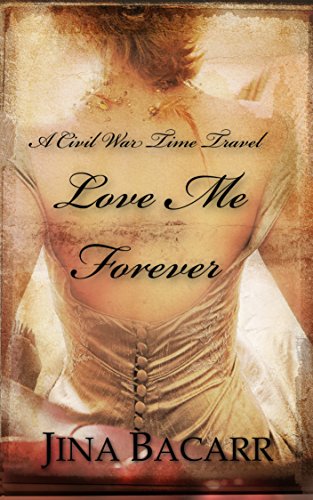IT’S NOT PERSONAL, BUT IT SHOULD BE
December 15, 2013 by A Slice of Orange in category Archives tagged as business, Craft, the writing process, Writing Goals0 0 Read more
Conversations with Barb and Jann
May 2, 2012 by Jann Ryan in category Jann says . . . tagged as Barb Delong, Conversations with Barb and Jann, Jann Audiss, reading, the writing processsimilar genre to avoid contaminating my vision and voice.†Research is the focus of Dolores Else’s reading, both for accurate historical information and to get a feel for the time period.
Jann: The Pros have some great comments, and it’s interesting to see what others do. I better get back to my WIP. Remember those goals we talked about a couple of months ago? Well, I just set one with our critique group at our last gathering that I’ve got to make.
3 0 Read moreConversations with Barb & Jann
March 2, 2012 by Marianne H. Donley in category Archives tagged as Barb Delong, Conversations with Barb and Jann, Jann Audiss, the writing processX-FILES: IT’S NOT SCIENCE FICTION
August 10, 2011 by Marianne H. Donley in category Archives tagged as Sharla Rae, the writing processby Sharla Rae
An author on deadline will tell you that the old saying “Time is Money†is just as true with writing as it is with any other business.
Have you ever spent hours crafting a perfect description only to realize it breaks up the action? Did you delete it and then discover a chapter or two later that very description or part of it was needed?
Next time, DO NOT DELETE.
Instead, create a folder for your WIP called X-Files Title (of WIP). Example, X-Files Love and Fortune. Paste well written “cuts†to your X-Files. Make them easy to locate. Preface each pasting with its origin, that is, the chapter it was cut from along with a brief description.
Example: Chapter one – description-forest, Chapter two – dialogue – argument between Jane Dither and John the jerk.
Later, if you haven’t used an X-File entry from a particular WIP, paste it to a general Description or Dialogue X-File. Once it’s actually used, delete it from “all†X-Files so you don’t accidentally reuse it.
It’s simple and it works. And when you’re on a deadline, it’s money in the bank.
Keep Your Characters True To Themselves
June 10, 2011 by A Slice of Orange in category Archives tagged as Sharla Rae, the writing process, writing craft |
By Sharla Rae
Hey, who’s telling this story?
I can make my characters do or say anything I want them to.
Many beginning writers subscribe to this theory.
I hate to break anyone’s bubble but that’s hogwash.
When introducing characters, the author breathes life into them with a physical description, personality, goals and motivations. They look, act and think in a particular manner. Just like real people. If the character doesn’t stay true to themselves, their actions will make no sense and readers are pulled out of the story.
Imagine:
- The drunken, hardnosed character Rooster Cogburn, (John Wayne in True Grit) suddenly goes soft on Mattie Ross, Kim Darby’s character?
- Mary Poppins takes a belt to her charges?
- 007 gives up his cool and goes mushy over his many sexual encounters.
Would you believe it? No. Because in each case the writer showed the reader who these people are – on the surface and deep down.
Two of the most common out-of-character traps involve age appropriate problems and inconsistent behavior. Ask these questions:
- Do my characters act their age? A mature woman or man of 30 to 35 years of age will not act, think or speak like a teen or young person fresh out of college. Recently I read a published book where a 32 year old female executive talked like a teeny-bopper when she got together with her thirty-something girlfriends of the same age. It totally threw me. Women of all ages talk a little trash with girlfriends but the nature of their conversations, even the language is different between age groups.
- Do my characters act and react in a manner consistent with their personality?Someone afraid of heights doesn’t climb a ladder. A grouchy loner doesn’t suddenly play slap-stick jokes on people. A prissy little girl won’t want to play baseball with the neighbor boys.
If a character does something that would never come naturally to them, they must have a good reason/motivation for the change of behavior. Example: The character who is afraid of heights might climb a ladder if a rabid dog is on her heels. An honest cop might rob a bank if villains are holding his family hostage.
My favorite tools to keep my characters in line are Character profile sheets, Horoscope personality profiles and Research.
The number one rule in using these tools is: Always connect the dots between them. Character profile worksheets serve as fast and easy reminders to writers. They include a list of physical descriptions, best friends, dress, enemies, ambitions/goals, sense of humor, temper, basic nature, personal quirks, habits, talents, hobbies, family backgrounds, profession, educational background etc. .
A common weakness in these profile sheets is that they shed little light on personality. That’s why I dig deeper. I search horoscope signs for personalities that best match my characters. Whether you believe in horoscope readings or not, the personalities listed under sun signs provide a great basic outline of a particular personality.
Horoscope personalities are especially helpful in determining how a character will react to a particular situation. Example: How would a hero with a Cancer personality react if he lost all his money or fell into a fortune? Money is no joke to the taciturn crab.
There are many horoscope books but I love Linda Goodman’s Sun Signs. This treasure lists the general characteristics of each sign and more. For instance, Goodman describes the Taurus child, Taurus adult male and female, Taurus boss and employee — the total personality package. She also explains how these personalities interact with each other.
What about a character’s romantic relationships? Linda Goodman’s Love Signs is amazing. Each sun sign is listed and then coupled with all the other signs to point out what the good and bad matches may look like, why they work or why they won’t. Example: Aries with an Aries, Aries with a Capricorn, Aries with a Taurus etc. Goodman further breaks it down into the female and male of each sign. Example: Aries female with Capricorn male or Capricorn female with an Aries male etc. .
Note: While Linda Goodman has passed, her books are still available. I recently looked at another Linda Goodman book on Amazon called Linda Goodman’s Relationship Signs. The contents suggest it contains a relationship chart worksheet. Sounds very interesting!
Do your research.
Horoscopes don’t cover nitty-gritty idiosyncrasies. What if you’re writing about a thief, a slave, an ad executive etc.? Research types of characters by reading autobiographies and biographies of real people who share a similar background with your character. Writing about a serial killer? Read serial killer profiles. Writing about a Hollywood star? Read up on their lives, their business and what it’s like to walk in their shoes. Then connect the dots. Determine for instance how your Aries female will handle her stardom.
Okay, say you’ve chosen your sun sign and done your research, but the personality thing still doesn’t quite jive with what you had in mind. We all know people who don’t fit the mold and characters are no different. So, can we color outside the lines or are these personalities set in stone?
Color outside the lines but don’t let the crayon slide off the tablet.
Here’s a real-life example: My friend is a Gemini but she was born on May 24th making her very close to Taurus. Most of the time she is more Taurus than Gemini, but she does share traits of each. It’s okay to combine personalities if it suits your purpose. It actually makes for a more interesting character, perhaps one with more layers. Just make sure to outline the personality carefully and keep the character true to him or herself.
What about character arc/growth? While characters learn from experience and goals may change as the plot evolves, their basic personality won’t change. The manner in which they handle situations or problems should always reflect who they are – even when they’re pressured into something that isn’t natural to them. Connect the dots. Like all tools, profile worksheets, horoscope personalities and research aren’t failsafe, but they are great guides for new writers and even for the seasoned writer who is writing a complicated character.
Helpful Links:
- Very good character profile sheet by Laura Hayden: http://www.suspense.net/profile.html
- Character profile sheet by Ylanne Sorrows: http://www.roleplaygateway.com/character-development-profile-template-t32760.html
- Character profile sheet from Writers’ Café: http://www.writerscafe.org/groups/Create-a-story-based-on-a-character-profile./3491/forum/12132/
So, how do you keep your characters true to themselves?
0 0 Read moreAffiliate Links
A Slice of Orange is an affiliate with some of the booksellers listed on this website, including Barnes & Nobel, Books A Million, iBooks, Kobo, and Smashwords. This means A Slice of Orange may earn a small advertising fee from sales made through the links used on this website. There are reminders of these affiliate links on the pages for individual books.
Search A Slice of Orange
Find a Column
Archives
Featured Books
SHOULD HAVE PLAYED POKER
Truth and integrity aren’t always what we’ve been taught to believe, and one could die making that discovery.
More info →
MISTLETOE & MAYHEM: A REGENCY HOLIDAY ROMANCE ANTHOLOGY
There’s no Christmas like a Regency Christmas spent under mistletoe! New York Times Bestselling author Cheryl Bolen and friends invite you to discover true love in eleven deliciously steamy romances in this all-new holiday collection.
More info →Newsletter
Contributing Authors
Search A Slice of Orange
Find a Column
Archives
Authors in the Bookstore
- A. E. Decker
- A. J. Scudiere
- A.J. Sidransky
- Abby Collette
- Alanna Lucus
- Albert Marrin
- Alice Duncan
- Alina K. Field
- Alison Green Myers
- Andi Lawrencovna
- Andrew C Raiford
- Angela Pryce
- Aviva Vaughn
- Barbara Ankrum
- Bethlehem Writers Group, LLC
- Carol L. Wright
- Celeste Barclay
- Christina Alexandra
- Christopher D. Ochs
- Claire Davon
- Claire Naden
- Courtnee Turner Hoyle
- Courtney Annicchiarico
- D. Lieber
- Daniel V. Meier Jr.
- Debra Dixon
- Debra H. Goldstein
- Debra Holland
- Dee Ann Palmer
- Denise M. Colby
- Diane Benefiel
- Diane Sismour
- Dianna Sinovic
- DT Krippene
- E.B. Dawson
- Emilie Dallaire
- Emily Brightwell
- Emily PW Murphy
- Fae Rowen
- Faith L. Justice
- Frances Amati
- Geralyn Corcillo
- Glynnis Campbell
- Greg Jolley
- H. O. Charles
- Jaclyn Roché
- Jacqueline Diamond
- Janet Lynn and Will Zeilinger
- Jaya Mehta
- Jeannine Atkins
- Jeff Baird
- Jenna Barwin
- Jenne Kern
- Jennifer D. Bokal
- Jennifer Lyon
- Jerome W. McFadden
- Jill Piscitello
- Jina Bacarr
- Jo A. Hiestand
- Jodi Bogert
- Jolina Petersheim
- Jonathan Maberry
- Joy Allyson
- Judy Duarte
- Justin Murphy
- Justine Davis
- Kat Martin
- Kidd Wadsworth
- Kitty Bucholtz
- Kristy Tate
- Larry Deibert
- Larry Hamilton
- Laura Drake
- Laurie Stevens
- Leslie Knowles
- Li-Ying Lundquist
- Linda Carroll-Bradd
- Linda Lappin
- Linda McLaughlin
- Linda O. Johnston
- Lisa Preston
- Lolo Paige
- Loran Holt
- Lynette M. Burrows
- Lyssa Kay Adams
- Madeline Ash
- Margarita Engle
- Marguerite Quantaine
- Marianne H. Donley
- Mary Castillo
- Maureen Klovers
- Megan Haskell
- Melanie Waterbury
- Melisa Rivero
- Melissa Chambers
- Melodie Winawer
- Meriam Wilhelm
- Mikel J. Wilson
- Mindy Neff
- Monica McCabe
- Nancy Brashear
- Neetu Malik
- Nikki Prince
- Once Upon Anthologies
- Paula Gail Benson
- Penny Reid
- Peter J Barbour
- Priscilla Oliveras
- R. H. Kohno
- Rachel Hailey
- Ralph Hieb
- Ramcy Diek
- Ransom Stephens
- Rebecca Forster
- Renae Wrich
- Roxy Matthews
- Ryder Hunte Clancy
- Sally Paradysz
- Sheila Colón-Bagley
- Simone de Muñoz
- Sophie Barnes
- Susan Kaye Quinn
- Susan Lynn Meyer
- Susan Squires
- T. D. Fox
- Tara C. Allred
- Tara Lain
- Tari Lynn Jewett
- Terri Osburn
- Tracy Reed
- Vera Jane Cook
- Vicki Crum
- Writing Something Romantic
Affiliate Links
A Slice of Orange is an affiliate with some of the booksellers listed on this website, including Barnes & Nobel, Books A Million, iBooks, Kobo, and Smashwords. This means A Slice of Orange may earn a small advertising fee from sales made through the links used on this website. There are reminders of these affiliate links on the pages for individual books.








































